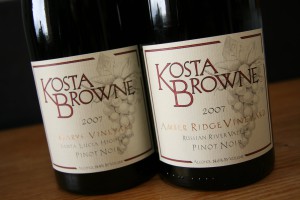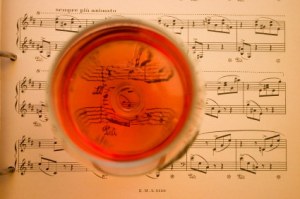Growing one’s collection of wine is not an easy feat to undertake. It requires, time, knowledge, storage, and money. So, if you’re going to consider yourself a true collector of delicious wines, you must have all the above resources. However, to really cultivate your collection, to make it coveted by every other wine enthusiast, start collecting the wines on this list.
You’ll be a wine connoisseur once you nab a bottle of these amazing Pinot Noirs:
Romanee-Conti
This Pinot Noir is annually released in limited supply, making it highly coveted and revered. Each vintage comes out remarkably consistent, with grapes being grown in the clay-rich soil of the Romanee-Conti vineyards, buyers jump at any opportunity to purchase one of these bottles.
Domaine Georges Roumier
Fermented differently than other Pinot Noirs, this unique vino is more fruity and flavorful than the rest. Bathed in a cold soak at the beginning of the fermentation process, this vintage is seamlessly blending the old with the new.
Richebourg
Considered by many to be the first of its kind, the Richebourg Pinot Noir is much richer than most other, thinner versions of the wine. It was also the first estate to receive AOC (appellation d’origine contrôlée) status.
d’Auvenay Mazis-Chambertin
With a love for natural, unfiltered wines and a name associated with the white variety, owner Lalou Bize-Leroy only produces about 350 cases of this wine annually. According to biodynamic approaches, each harvest yields a very low amount of crop each year.
Sylvain Cathiard
Terroir is almost as important to the characteristics of wine as the grapes are. However, there is only one estate that truly adheres to this philosophy. Only using materials for labor and farming from resources within a few miles of the vines, this Pinot Noir is as terroir-pure as a wine can get.
Louis Jadot
Produced traditionally and extremely consistent in quality, Louis Jadot is one of the largest wine producers in the world. Preferring wood over metal, the natural fermentation process of this Pinot Noir has been ahead of the trend since day one.
Kosta Browne
Not rare or impossible to find, this California wine makes up for its lack of exclusivity with its diligently garnered and formulated ingredients and processes. Letting the vines grow to full maturity before harvesting, this wine is able to capture the flavorful, complex notes it’s loved for.
Domaine Fourrier
Separated by terroir, the Pinot Noirs that Domaine Fourrier produces are pure in origin, but that’s not all. Their malolactic fermentation technique combined with their 20% new oak barrels produces a more delicate, fruity wine.
Marcassin
With a waiting list over 5,000 names long, Marcassin Pinot Noir might be the most coveted, exclusive vintage of them all. Only offered to those on their mailing list, this unfiltered and cold stabilized wine is the creme de la creme when it comes to Pinot Noir.
Peregrine Pinnacle
The grapes on the vines of Central Otago, New Zealand endure extreme weather conditions. However, located on stone-heavy soil, the grapes have excellent drainage year round. Also, aided by a gradient that changes to mimic the wings of a peregrine falcon, the vines get excellent sunlight 12 months a year at the vineyard.












 There’s no doubt in my mind that if you have arrived to this site you enjoy wine. The question, however, is whether you enjoy it to the full extent you are able. Are you able to apprehend the subtleties between years, between location of the grapes, the type of wine? More than likely you have tried a few. However, I would like to put forward the idea of D. T. Suzuki, that the master is a master because he approaches his subject of mastery every time as a beginner. Therefore, no matter how experienced, you will enjoy wine more when you stick to these steps and principles, and approach it by sense alone, and not with expectation.
There’s no doubt in my mind that if you have arrived to this site you enjoy wine. The question, however, is whether you enjoy it to the full extent you are able. Are you able to apprehend the subtleties between years, between location of the grapes, the type of wine? More than likely you have tried a few. However, I would like to put forward the idea of D. T. Suzuki, that the master is a master because he approaches his subject of mastery every time as a beginner. Therefore, no matter how experienced, you will enjoy wine more when you stick to these steps and principles, and approach it by sense alone, and not with expectation. Look at the wine. To get a better view, tilt the glass to its side and observe the color. Can you see whether it changes? Is it darker in the middle? Is it lighter on the outsides? What type of a color would you describe it with? I’ll give you a few words you can consult as necessary. Ruby, Violet, Purple, Burgundy, Pink, Rose, Amber, so on.
Look at the wine. To get a better view, tilt the glass to its side and observe the color. Can you see whether it changes? Is it darker in the middle? Is it lighter on the outsides? What type of a color would you describe it with? I’ll give you a few words you can consult as necessary. Ruby, Violet, Purple, Burgundy, Pink, Rose, Amber, so on.